This project is a subproject of #Ion wind loudspeaker experiments.
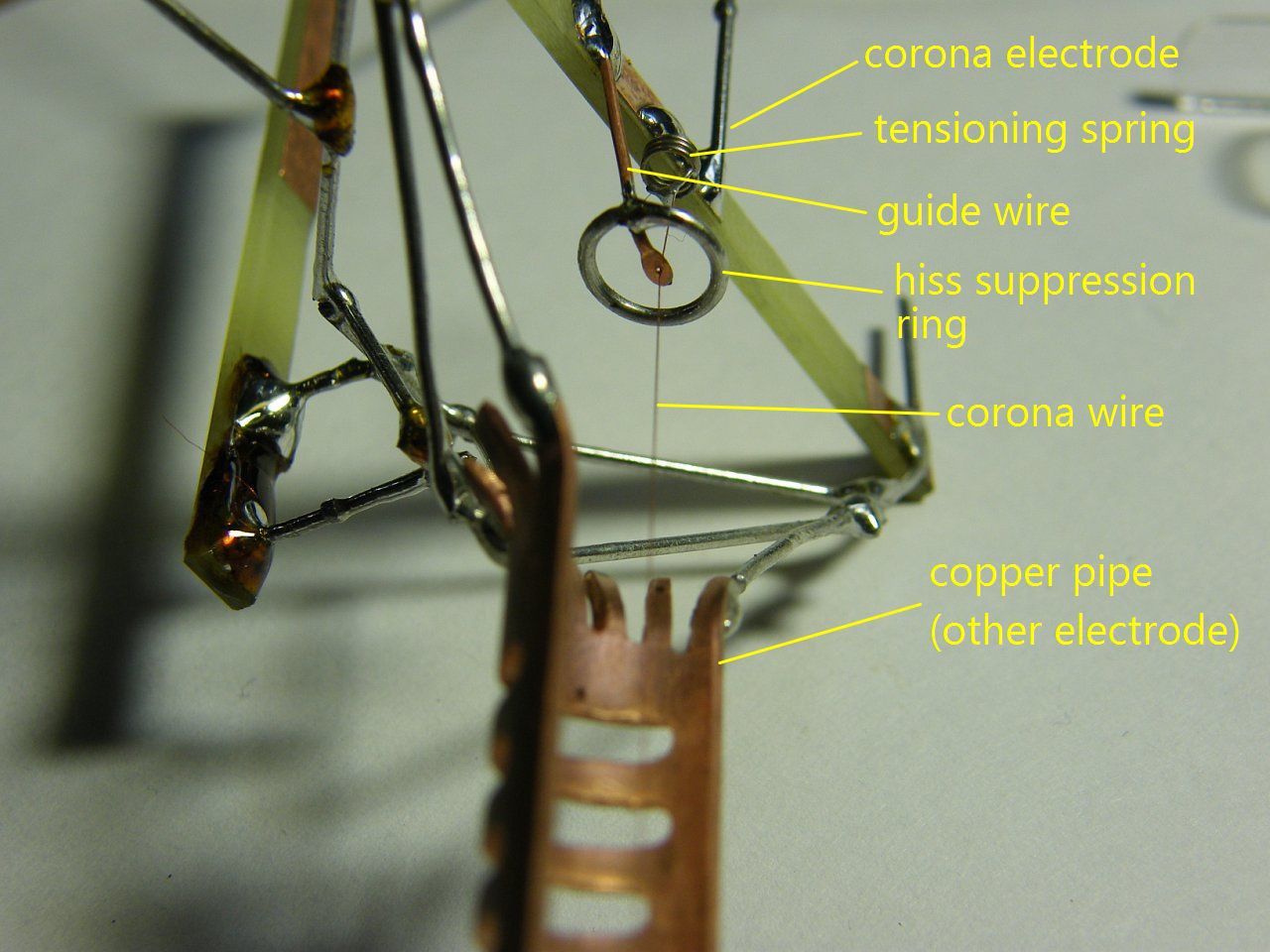
Guide wire is just a piece of soft copper wire, that is easily bendable to adjust the position of corona wire in the pipe.
Hiss suppression ring was added after observing intermittent corona discharge from tip of the guide wire. The ring eliminates the intermittent discharge by screening most of the electric field. This made the thing very silent.
Insulating structural elements are simply pieces of FR4 PCBs.
Both the corona wire and the pipe are isolated from ground, so high voltage can be applied in any polarity. This makes the thing potentially lethal to touch when it is operating. But it isn't a good idea to touch it even if the pipe was grounded, because all the high voltage stuff is exposed anyway. This is an experimental prototype, anyway.
Polarity
Note that I can't say cathode and anode to label the electrodes, because the blower can be connected both ways, and will still be making the wind in the same direction. It is the sign of the ions in the drift region that changes (it corresponds to the sign of corona electrode).
Also, the appearance of the corona discharge changes with polarity. If positive corona (corona around +V), the glow is smooth all the way along the wire. If negative is applied to the wire, the corona discharge forms a pattern of dots on the wire.
I haven't noticed any performance difference because of this, but I believe positive corona is better. Because positive corona means positive charge carriers in drift zone. Positive charge carriers can only be ions, while some of the negative charge carriers can be plain electrons, which are extremely lightweight, and thus are unable to push the air.
And, positive coronas apparently produce less nasty gases like nitrous oxide and ozone.
==Characteristics
I-V-W curve
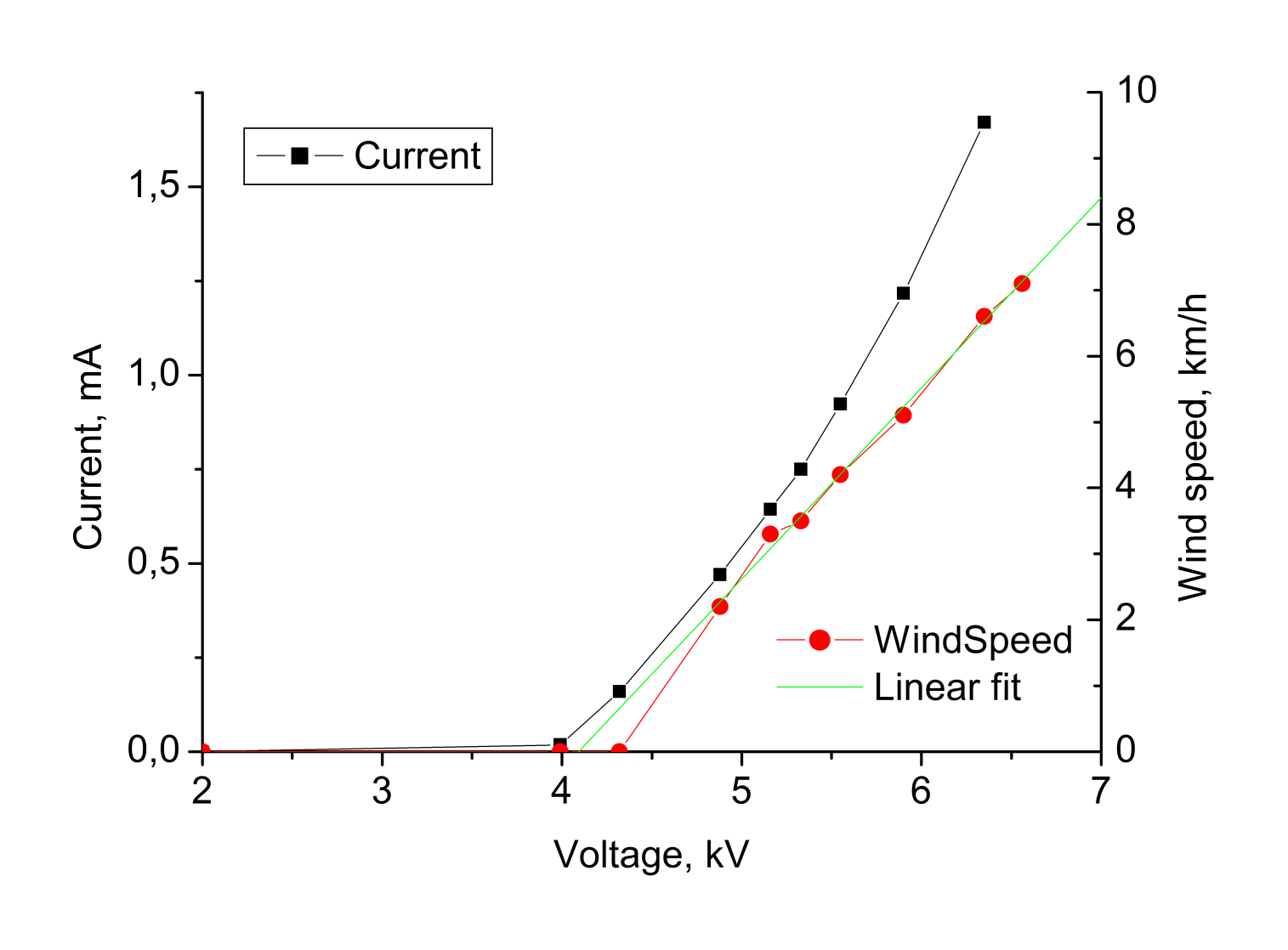
Wind speed measured by axial turbine anemometer, placed about 100mm behind the blower, at the exhaust side.
The result is that the wind speed is in rather linear relationship with applied voltage (I expected it to be linear on current, basing on some calculations). is the wind speed proportional to pressure? I hope so, but I'm not really sure about it.
Maximum voltage on the graph is limited by the onset of sparking. The lack of any current below 4kV is because of no corona discharge at those voltages.
Frequency response
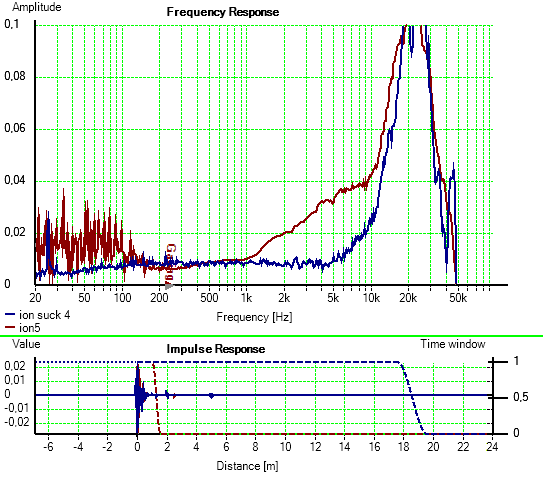
Blue trace is at suction side. Brown trace is at exhaust side. I think the low-frequency noisy spectrum is caused by wind making noises itself.
This frequency response was measured with voltage-mode drive. It was done through a sound card of a PC with help of HOLM Impulse software. Results are interesting.
Note that this is the frequency response of the system as a whole. That includes the soundcard, the amplifier, the blower, the microphone and the soundcard again. I haven't tested the amplifier alone, which may be responsible for the high-frequency peak around. The microphone is a tiny electret mike ripped off some device. These mikes have good flat frequency response, typically. I put it in a metal cage to give it some extra protection from ions in the wind.
==video
This is one of the first attempts to make some sound with this blower. I used negative corona here, because the living dots look much cooler than even glow of positive corona.
Please excuse the shit quality, which is mostly thanks to the quality of camera. The camera didn't record the high-frequency content, but the recording actually sounds BETTER than it was in reality, because it was accompanied by intense high-frequency whistle from a far-from-perfect CRT power supply. That whistle (12 kHz or so) was completely eliminated by camera's sound recording system.
 DeepSOIC
DeepSOIC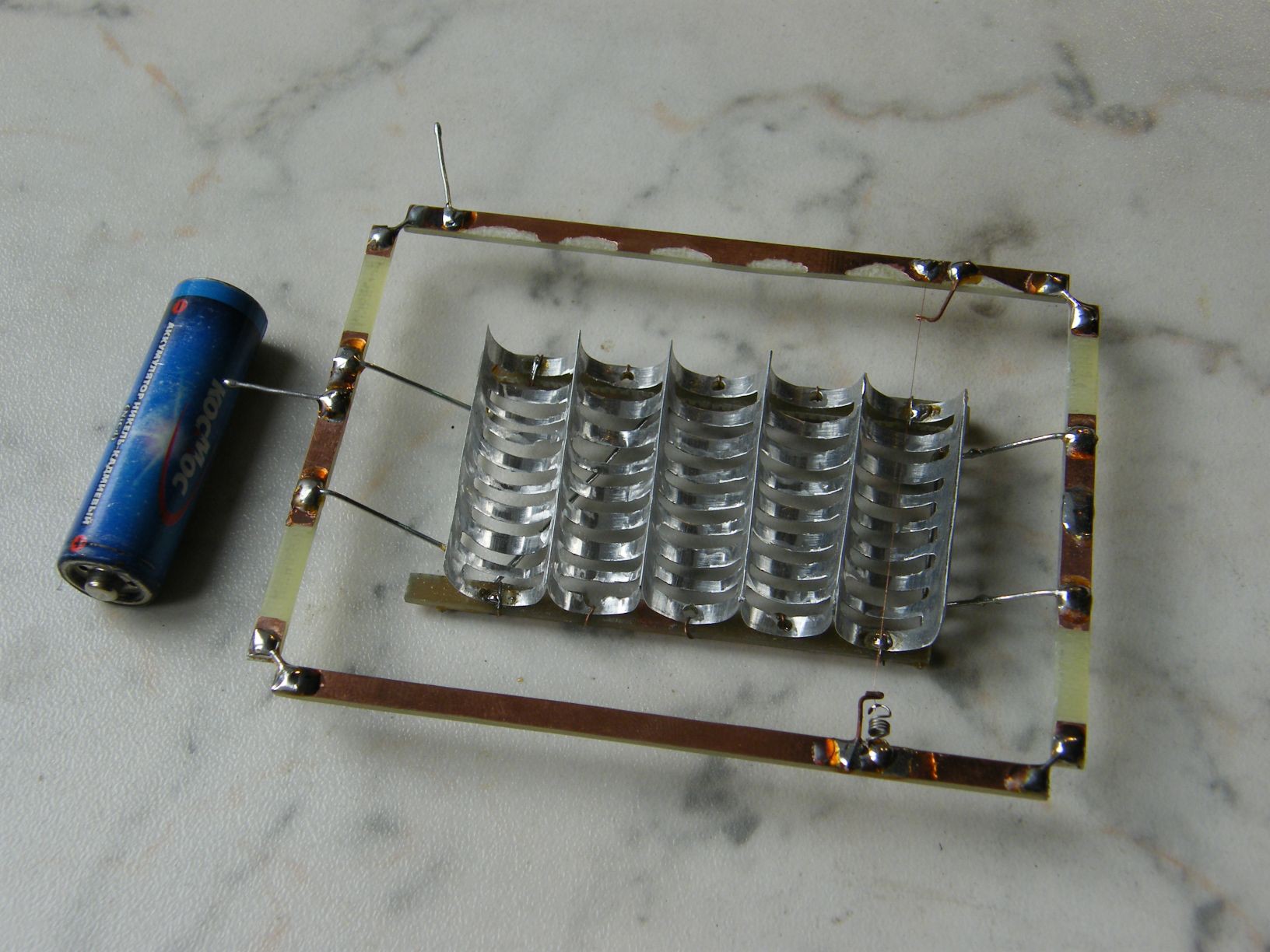
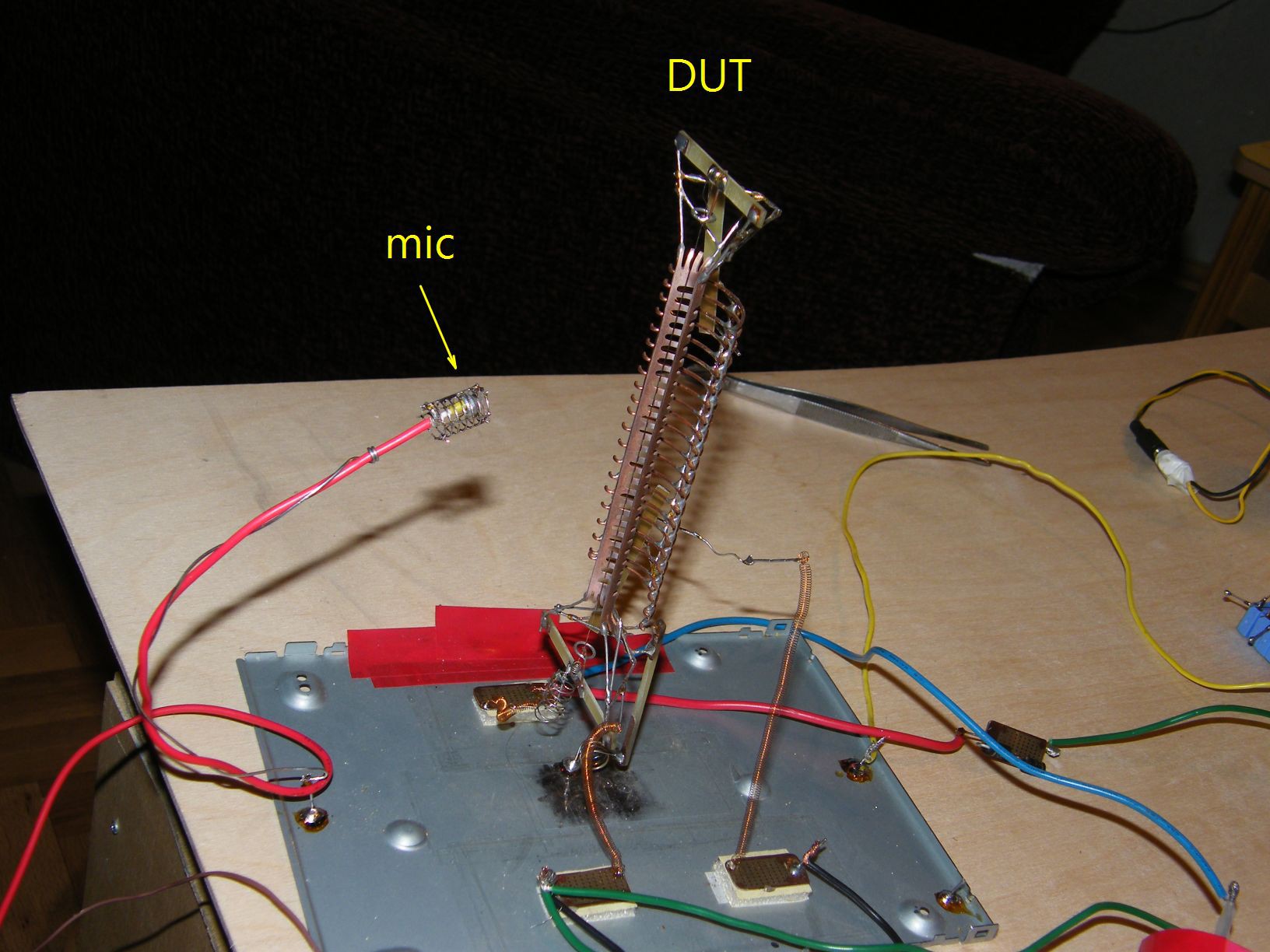 There was an accident during this.
There was an accident during this.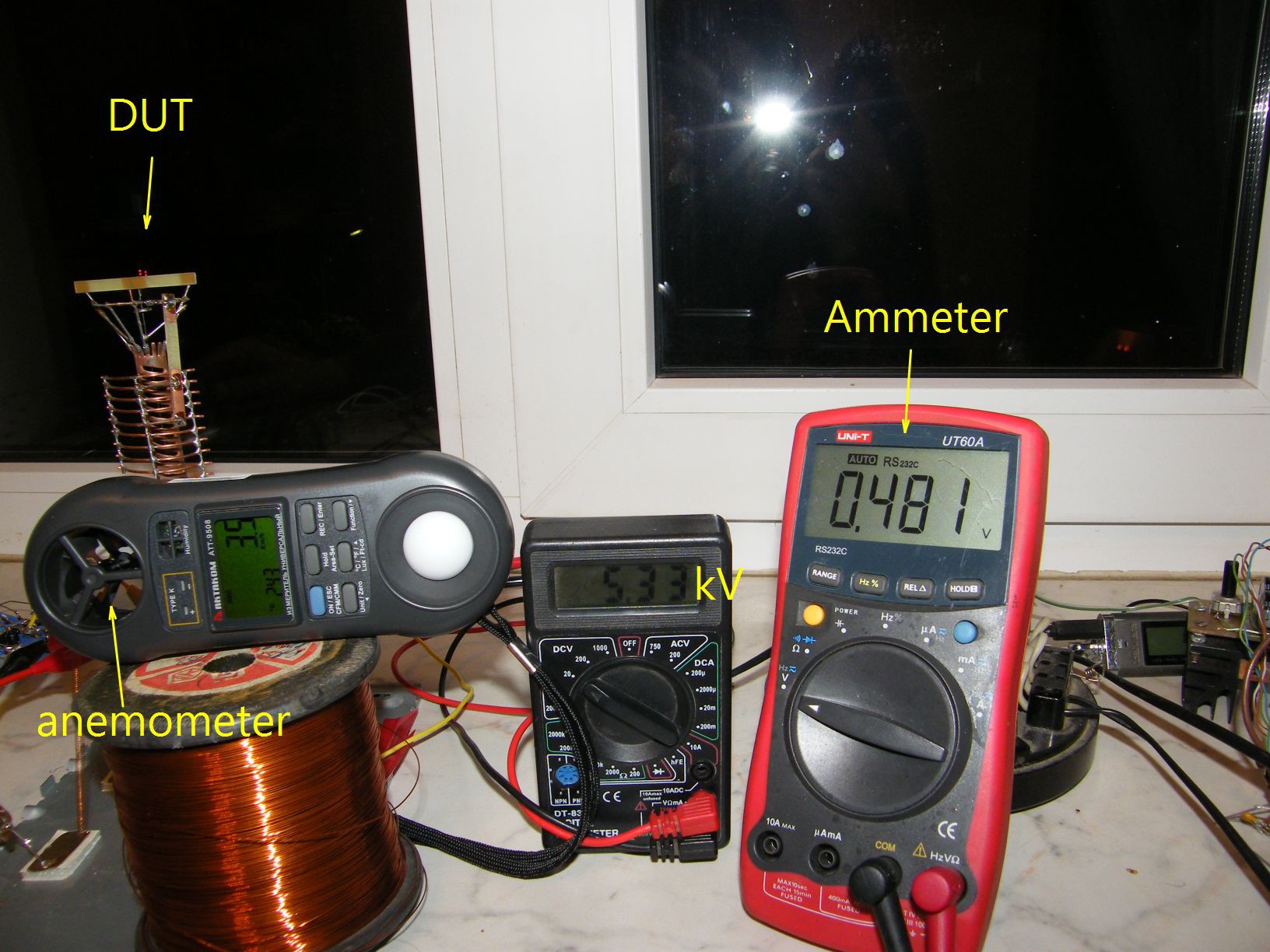

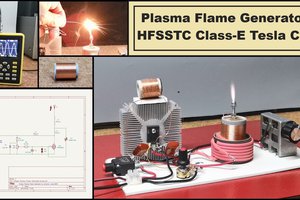
 mircemk
mircemk
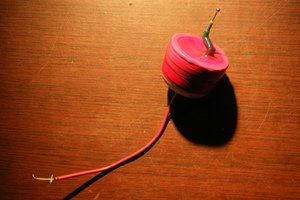
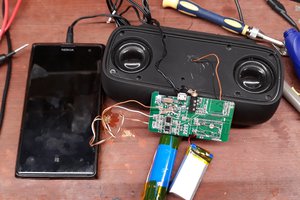
Actually now I've thought about it some more, I realise the PC is only for listening, not producing the sound.
In that case, maybe hide the mic behind a piece of wire mesh, connected to earth, or to system ground? Maybe even a small wire cage. Just to provide a more attractive path for those stray, conductive ions! And perhaps a cheap USB sound card, just to add a few more components between the mic and the motherboard, normally a mic will go straight to the Southbridge, or whatever they have nowadays.
A new video I think would be better, presume you've made progress in the last 5 years!